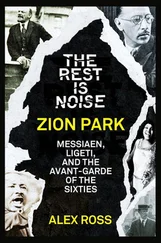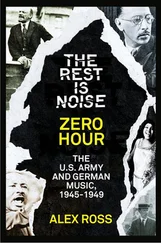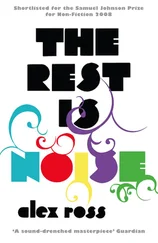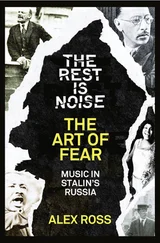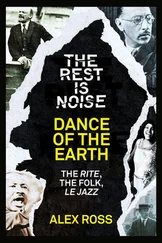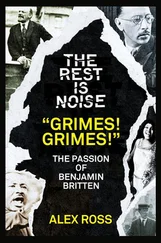In the spring of 1949, John Cage, aged thirty-six, arrived in Paris with his professional and personal partner, the dancer Merce Cunningham. At the suggestion of Virgil Thomson, Cage went to see Boulez, and an unlikely, short-lived, but mutually influential friendship was born.
Already the most radical American composer of the time, Cage proceeded to unleash some of the most startling events and non-events in musical history: tape and radio collages, works composed by chance process, multimedia happenings, and, most famously, 4 9 33 0 , during which the performer makes no sound. Some years later, in conversation with Calvin Tomkins, Cage defined himself in terms that Boulez would have readily understood: “I am going toward violence rather than tenderness, hell rather than heaven, ugly rather than beautiful, impure rather than pure—because by doing these things they become transformed, and we become transformed.” And yet Cage’s enterprise lacked the pitilessness of Boulez’s assault on the past. In place of the term “avant-garde,” which implied a quasi-military forward drive, Cage preferred “experimental,” which, he said, was “inclusive rather than exclusive.” In truth, Cage was capable both of great violence and of great tenderness, and his music wavers tensely between those extremes.
Cage was a Los Angeles native, the son of an inventor who built one of the earliest functioning submarines. He had a Roman nose, a gaunt face, and a reedy voice, like that of the actor Vincent Price. In the early fifties he assumed the look of a hip young physicist, cropping his hair short and dressing in stiff-collared white shirts. He had moved to New York in 1942, and by the end of the decade he was living on the top floor of a crumbling tenement on the East River, where he fashioned a bohemian-Zen utopia of white walls and minimal furnishings. He worked at a drafting table outfitted with a fluorescent lamp, etching his scores with German-made Rapidograph pens. Cage’s personality was a curious mix of eccentricity and worldliness; even as he explored esoteric musical regions, his activities seldom went unrecorded in the press.
Cage began as an acolyte of Arnold Schoenberg. In 1935 and 1936 he attended several of the great man’s classes at USC and UCLA. His attempts at twelve-tone writing were peculiar, featuring rows of up to twenty-five notes. From the start, he expressed disdain for the conventions of mainstream classical music and looked around for alternatives. In 1930, when he was only eighteen, he made a trip to Berlin and received stimulation from the culture of the Weimar Republic. He happened to attend a “phonograph concert” presented by Paul Hindemith and Ernst Toch, at which phonographs played prerecorded sounds onstage, including a “spoken music” of phonetic syllables. In 1939 Cage wrote a work in which a phonograph becomes a musical instrument— Imaginary Landscape No. 1 , for muted piano, Chinese cymbal, and variable-speed turntables. Three years later came Credo in Us , which includes a part for a record player or radio; the score suggests, with apparent sarcasm, that the operator “use some classic: e.g. Dvořák, Beethoven, Sibelius, or Shostakovich.”
For Cage, the classical tradition was worn-out kitsch ripe for de-construction, in the manner of his intellectual hero, the conceptual artist Marcel Duchamp. A record player squawking random bits of Beethoven or Shostakovich became the sonic equivalent of painting a mustache on the Mona Lisa or displaying a urinal as sculpture.
Also, Cage loved noise. In a 1940 manifesto he declared, “I believe that the use of noise to make music will continue and increase until we reach a music produced through the aid of electrical instruments which will make available for musical purposes any and all sounds that can be heard.” He made his name as a composer for percussion, manufacturing instruments from brake drums, hubcaps, spring coils, and other cast-off car parts. At the same time, he was bewitched by soft sounds, rustlings on the border between noise and silence. The prepared piano, his most famous invention, never fails to surprise listeners expecting to be battered by some unholy racket; the preparation process, involving the insertion of bolts, screws, coins, pieces of wood and felt, and other objects between the strings, is conceptually violent, but the sounds themselves are innately sweet. Cage’s prepared-piano pieces—among them The Perilous Night , Daughters of the Lonesome Isle , and the cycle Sonatas and Interludes —have some of the supernatural poignancy of Erik Satie, whose music Cage loved from an early age.
The same gentleness governs the String Quartet in Four Parts (1949–50), whose movements are titled “Quietly Flowing Along,” “Slowly Rocking,” “Nearly Stationary,” and “Quodlibet.” Underneath the ethereal surface, however, unsettling new processes are at work. In the quartet Cage gathers various kernels of musical sound and arranges them in a “gamut,” a kind of chessboard of possibilities. He moves from one sound to another in a detached frame of mind, trying not to push them where they do not want to go. This abdication of control sets the stage for an enormous shock.
When Cage heard Boulez’s Second Sonata, he was, in his own words, “stupefied by its activism, by the sum of the activities inherent in it.” In his next works, Sixteen Dances and the Concerto for Prepared Piano and Chamber Orchestra, everything disintegrated. At first, Cage maintained the method of the String Quartet in Four Parts , making moves on a chart of sixty-four sounds, containing notes, chords, trills, and so on. Then, while writing the final movement of the Concerto, in late 1950 and early 1951, the composer began tossing coins in order to determine what should come next. He followed the rules of the Chinese divinatory practice of the I Ching , or Book of Changes , which uses random operations to generate any one of sixty-four hexagrams, each describing a different state of mind or being (“force,” “radiance,” and so on). The piano cycle Music of Changes , composed in 1951, depended on the I Ching throughout; successive coin tosses determined what sound would be heard, how long it should last, how loud it should be, what tempo should be observed, and how many simultaneous layers of activity should accumulate. When the process called for maximum density, Cage wrote down what he acknowledged to be an “irrational” quantity of notes, leaving the execution to the performer’s discretion.
Half the sounds on the charts were, in fact, silences. As James Pritchett writes in a study of Cage’s music, the composer was becoming interested in the “interchangeability of sound and silence.”
The use of chance—Cage would later make musical decisions based on imperfections in manuscript paper, star charts, and computer-generated numbers—strayed far outside European classical tradition. By downtown New York standards, however, it was nothing terribly outlandish. In these years Jackson Pollock, Willem de Kooning, Franz Kline, Barnett Newman, Mark Rothko, and Robert Rauschenberg were throwing down violent swirls of paint, stark monochrome patterns, and shiny geometric lines, or making canvases entirely black or entirely white. Pollock’s “drip paintings” used a semi-chance process.
Cage consorted with the painters, following them from the Artists’ Club on East Eighth Street to the Cedar Tavern. He also worked in tandem with Merce Cunningham, who had created the role of the Revivalist in Martha Graham’s Appalachian Spring and later devised his own joltingly free and fluid choreographic language. Together, Cunningham and Cage invented a new kind of chance-driven dance in which sound and movement went their separate ways only to meet up again on a deeper conceptual level. Around this time, Cage browsed through the literature of Zen Buddhism, which supplied him with an all-accepting, “whatever happens will happen” approach to the creative process.
Читать дальше

